Abstract
When liver treated with antibiotics to inhibit microbial growth were held at 10 degrees C, the initial high pH (6.4) declined as lactic acid accumulated throughout the storage period of 10 days. The glycogen content also declined, but the glucose concentration in the tissues remained high. When livers were allowed to spoil at 10 degrees C, distinct but variable floras developed within the tissues, in the drip, and on the upper surface. Deep-tissue floras were composed of anaerobic and facultative organisms (Lactobacillus, Enterobacter, Aeromonas); surface floras were generally dominated by strictly aerobic organisms (Pseudomonas, Acinetobacter); drip floras contained variable proportions of organisms of all three types, but the facultatively anaerobic Enterobacter were usually present as a major component. Spoilage occurred after 4 to 6 days with the development of visible discrete colonies on the upper surface without spoilage odors being evident. Changes in tissue and drip composition due to microbial activity could be detected only when spoilage had reached an advanced stage.
Full text
PDF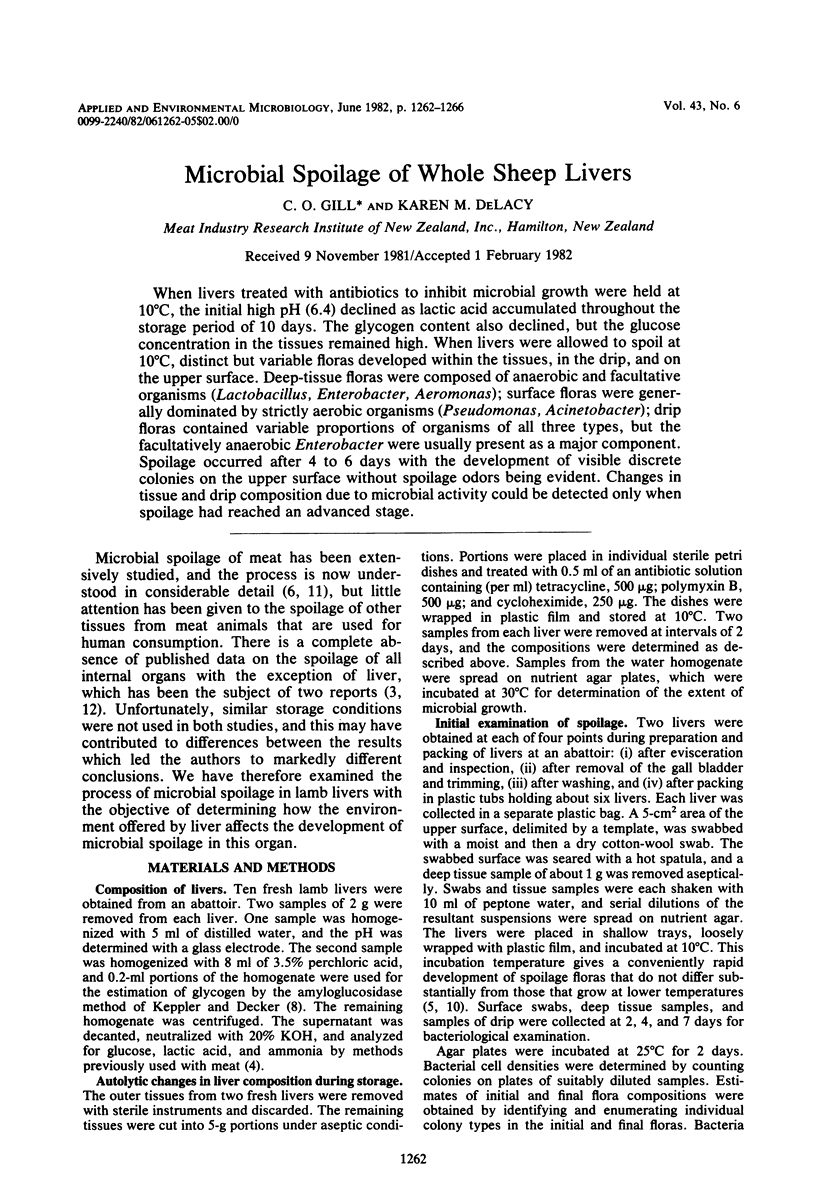
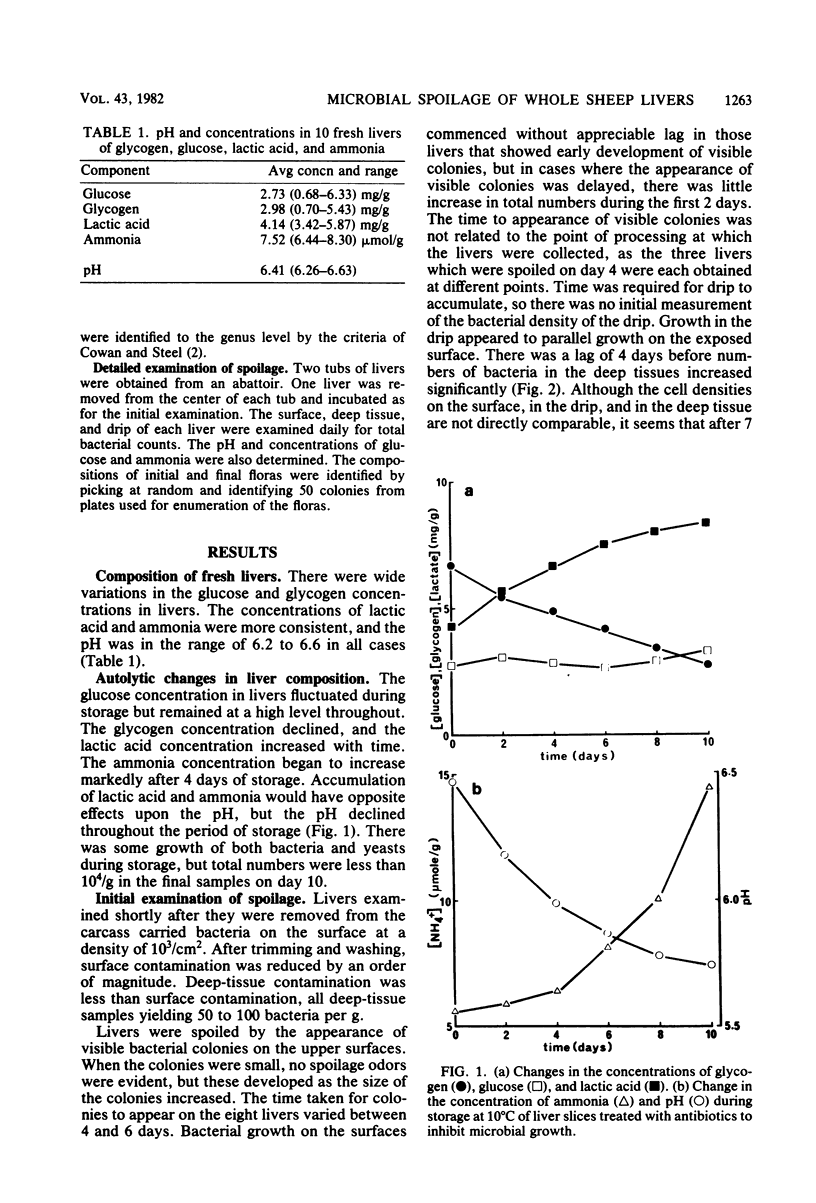
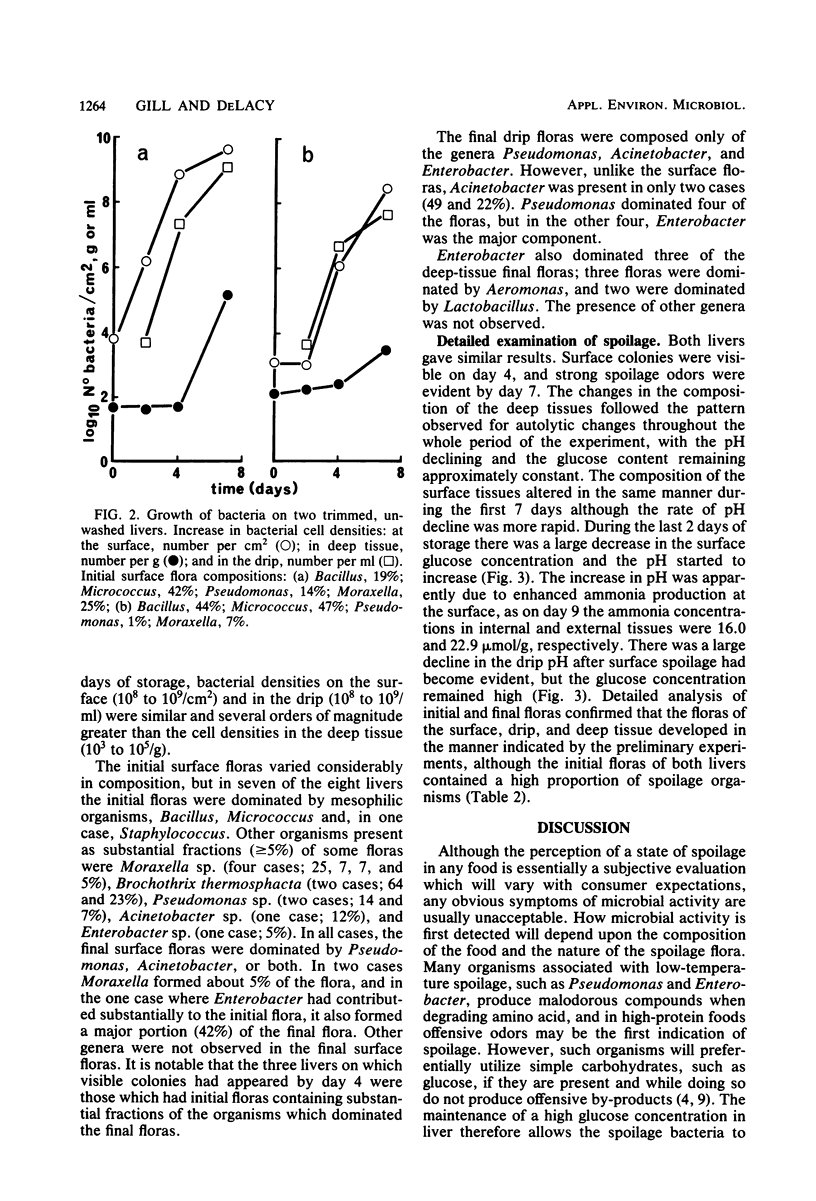
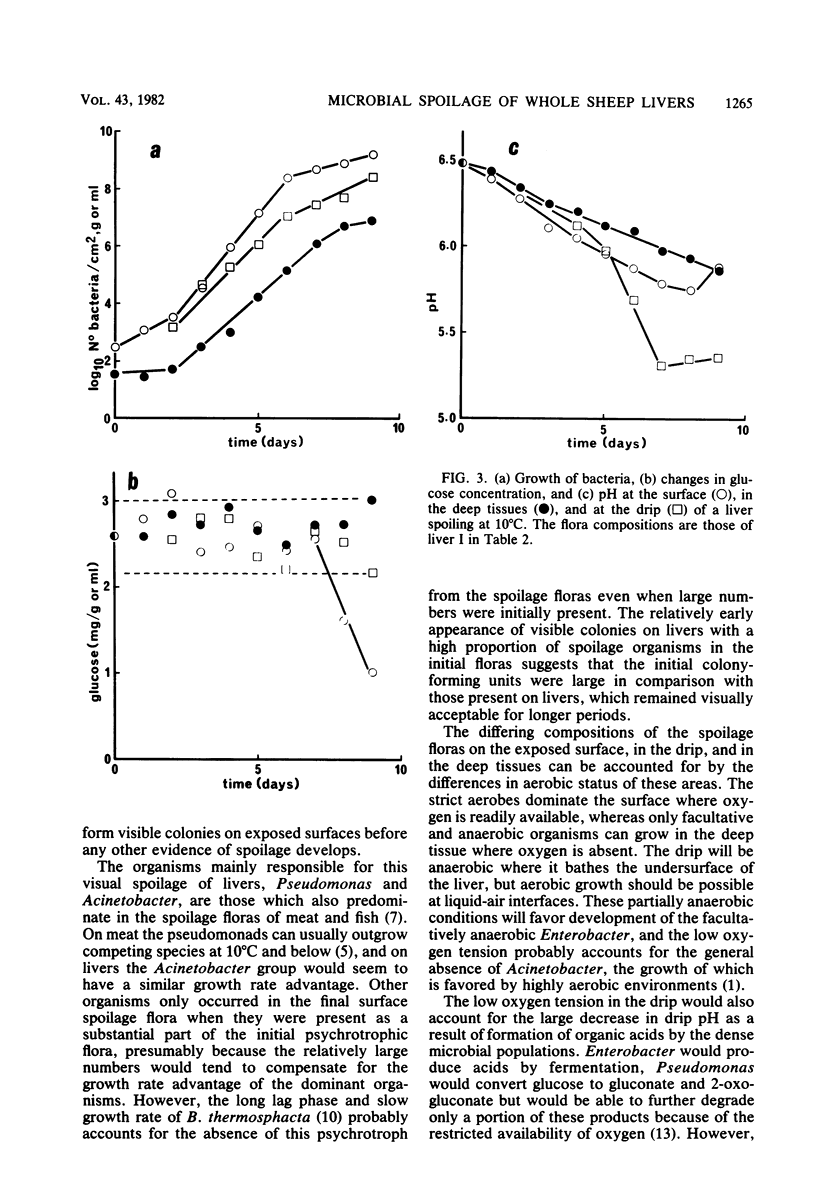
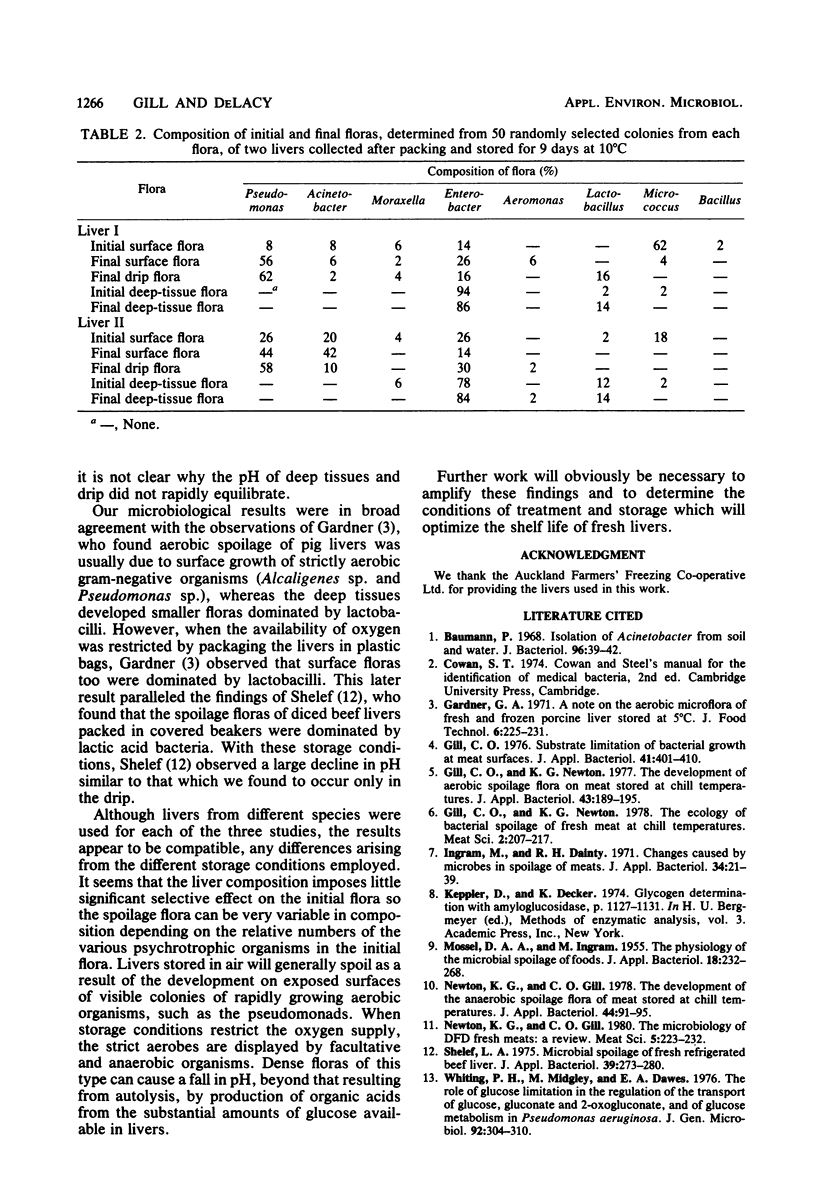
Selected References
These references are in PubMed. This may not be the complete list of references from this article.
- Baumann P. Isolation of Acinetobacter from soil and water. J Bacteriol. 1968 Jul;96(1):39–42. doi: 10.1128/jb.96.1.39-42.1968. [DOI] [PMC free article] [PubMed] [Google Scholar]
- Gill C. O., Newton K. G. The development of aerobic spoilage flora on meat stored at chill temperatures. J Appl Bacteriol. 1977 Oct;43(2):189–195. doi: 10.1111/j.1365-2672.1977.tb00742.x. [DOI] [PubMed] [Google Scholar]
- Gill C. O. Substrate limitation of bacterial growth at meat surfaces. J Appl Bacteriol. 1976 Dec;41(3):401–410. doi: 10.1111/j.1365-2672.1976.tb00652.x. [DOI] [PubMed] [Google Scholar]
- Ingram M., Dainty R. H. Symposium on microbial changes in foods. Changes caused by microbes in spoilage of meats. J Appl Bacteriol. 1971 Mar;34(1):21–39. doi: 10.1111/j.1365-2672.1971.tb02266.x. [DOI] [PubMed] [Google Scholar]
- Newton K. G., Gill C. O. The development of the anaerobic spoilage flora of meat stored at chill temperatures. J Appl Bacteriol. 1978 Feb;44(1):91–95. doi: 10.1111/j.1365-2672.1978.tb00779.x. [DOI] [PubMed] [Google Scholar]
- Shelef L. A. Microbial spoilage of fresh refrigerated beef liver. J Appl Bacteriol. 1975 Dec;39(3):273–280. doi: 10.1111/j.1365-2672.1975.tb00572.x. [DOI] [PubMed] [Google Scholar]
- Whiting P. H., Midgley M., Dawes E. A. The role of glucose limitation in the regulation of the transport of glucose, gluconate and 2-oxogluconate, and of glucose metabolism in Pseudomonas aeruginosa. J Gen Microbiol. 1976 Feb;92(2):304–310. doi: 10.1099/00221287-92-2-304. [DOI] [PubMed] [Google Scholar]


